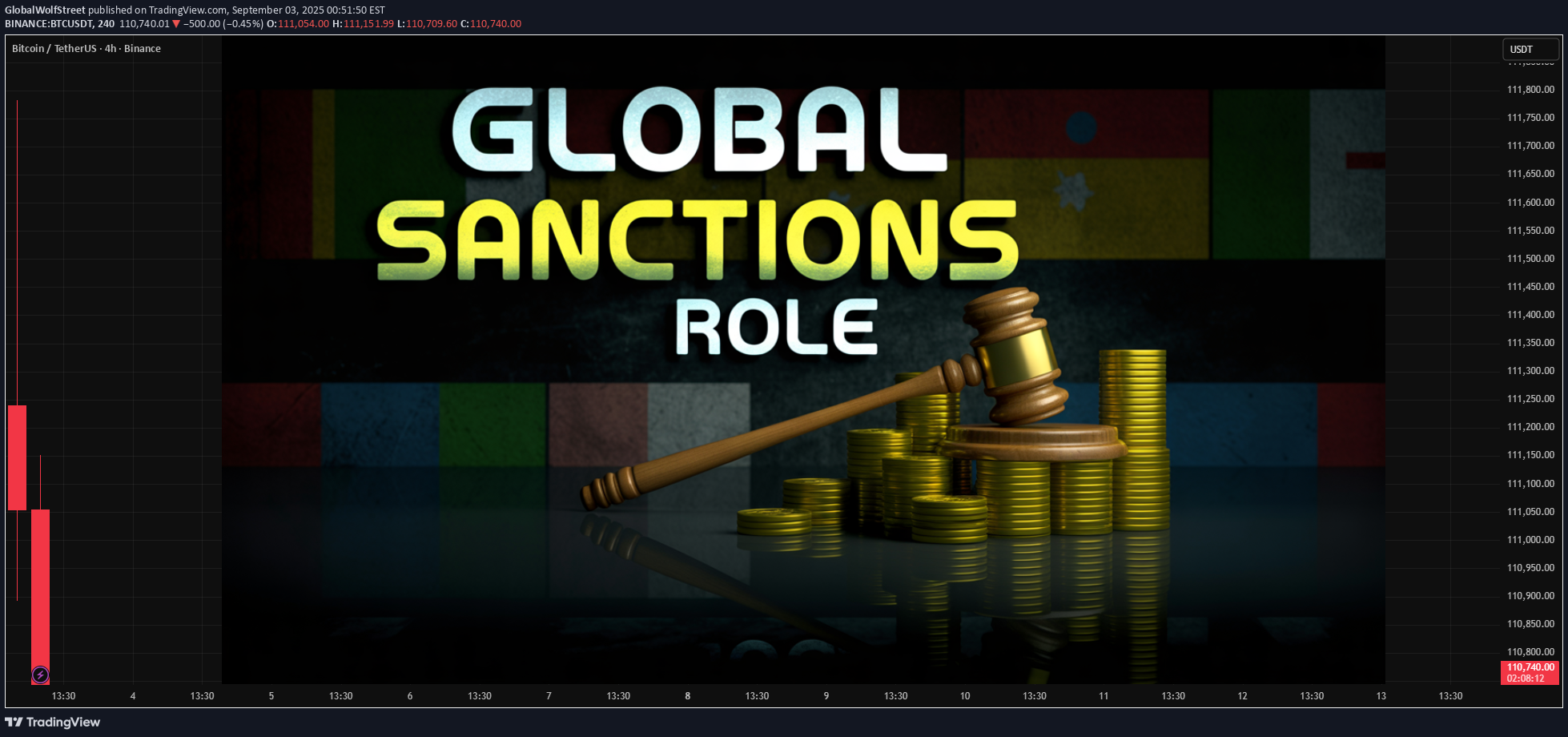تحلیل تکنیکال GlobalWolfStreet درباره نماد BTC در تاریخ ۱۴۰۴/۶/۱۲

1. Understanding International Sanctions 1.1 Definition International sanctions are restrictive measures imposed by one or multiple countries, regional blocs, or international organizations to influence or punish a state, group, or individual for violating international norms, engaging in aggression, terrorism, human rights abuses, or other unacceptable activities. They are designed as a non-violent coercive measure, offering an alternative to war while still exerting substantial economic and political pressure. 1.2 Actors Imposing Sanctions United Nations (UN): The UN Security Council can impose multilateral sanctions binding on all member states. European Union (EU): The EU enforces sanctions collectively across its member states. United States: The U.S. uses sanctions extensively through agencies like the Office of Foreign Assets Control (OFAC). Other Individual Nations: Countries such as the UK, Canada, Australia, Japan, and China also impose sanctions independently or in alignment with allies. 1.3 Objectives of Sanctions To deter aggression (e.g., sanctions against Russia for Ukraine). To prevent nuclear proliferation (e.g., Iran and North Korea). To fight terrorism (targeting terrorist financing networks). To punish human rights abuses (e.g., Myanmar military leaders). To influence regime behavior or induce political change. 2. Types of Sanctions Sanctions vary in nature and severity, targeting specific economic, financial, or individual dimensions. 2.1 Economic Sanctions Trade embargoes: Complete or partial bans on exports/imports (e.g., U.S. embargo on Cuba). Tariff increases: Punitive duties to restrict trade. Restrictions on technology transfer: Denial of access to critical technologies (e.g., semiconductor bans on China). 2.2 Financial Sanctions Asset freezes: Preventing access to assets held abroad. Banking restrictions: Disconnecting banks from SWIFT or dollar-clearing systems. Investment bans: Prohibiting foreign direct investment in certain sectors. 2.3 Targeted (Smart) Sanctions Travel bans: Restricting the mobility of individuals. Restrictions on elites: Freezing wealth of oligarchs or leaders. Sectoral sanctions: Targeting specific industries like defense, energy, or banking. 2.4 Secondary Sanctions These extend restrictions to third-party countries or companies dealing with sanctioned entities, creating a global ripple effect. For example, U.S. sanctions on Iran penalized European companies trading in Iranian oil. 3. Mechanisms of Sanctions in Markets Sanctions affect markets through direct and indirect mechanisms: Supply and Demand Shock: Blocking exports or imports alters the global supply of goods (e.g., oil, gas, grain). Financial Disconnection: Restricting banking and payment systems limits trade financing. Investment Deterrence: Sanctioned nations face reduced FDI and capital flight. Market Uncertainty: Sanctions increase geopolitical risks, affecting investor sentiment. Currency Depreciation: Sanctions often weaken the local currency due to reduced trade inflows. 4. Impact on Global Commodity & Energy Markets 4.1 Oil Markets Iran: U.S. sanctions on Iranian oil exports reduced global supply, raising oil prices. Russia: Sanctions on Russian crude and refined products led to shifts in global supply chains, with India and China absorbing Russian oil at discounts. 4.2 Natural Gas Europe’s dependence on Russian gas was disrupted after the 2022 Ukraine invasion. LNG imports from the U.S. and Qatar surged, reshaping global gas flows. 4.3 Metals & Minerals Russia and Ukraine are major exporters of nickel, palladium, titanium, and rare earths. Sanctions and war disruptions caused price spikes in industrial metals. 4.4 Food & Agriculture Sanctions on Russia and Belarus affected fertilizer exports, raising global food prices. Blockades in Ukraine disrupted wheat exports, creating shortages in Africa and the Middle East. 5. Impact on Financial Markets 5.1 Stock Markets Short-term volatility: News of sanctions often triggers panic selling or buying. Sector-specific impacts: Defense, energy, and commodities may gain, while trade-exposed sectors suffer. Long-term structural shifts: Companies reduce exposure to sanctioned nations, realigning supply chains. 5.2 Currency Markets (Forex) Sanctions reduce foreign currency inflows, weakening the sanctioned nation’s currency. Example: The Russian ruble plunged after sanctions in 2022, though capital controls later stabilized it. 5.3 Global Investment Flows Foreign investors withdraw from sanctioned economies. Sovereign wealth funds and pension funds divest holdings in restricted countries. 6. Regional Impacts of Sanctions 6.1 Russia & Ukraine Western sanctions cut Russia from global finance and technology. Ruble volatility, inflation, and capital flight followed. Global ripple effect: Energy, wheat, and fertilizer shortages. 6.2 Iran Oil export restrictions shrank Iran’s GDP. Secondary sanctions limited European and Asian companies’ engagement. Regional instability increased as Iran sought alternative trade partners. 6.3 North Korea Isolated from global trade and finance. Reliance on smuggling, China, and black markets. Limited global market impact but severe domestic hardships. 6.4 Venezuela Sanctions on its oil industry collapsed exports. Hyperinflation and economic collapse ensued. Regional spillover through migration crises. 7. Unintended Consequences of Sanctions Black Markets & Smuggling: Sanctioned countries often develop underground economies. Closer Alliances Among Sanctioned States: Russia, Iran, and China increasing cooperation. Impact on Civilians: Shortages, inflation, unemployment, and poverty rise. Market Distortion: Discounted commodities from sanctioned nations (e.g., Russian oil to Asia). Innovation in Alternatives: Countries develop domestic industries or alternative financial systems (e.g., Russia’s SPFS payment system, China’s CIPS). 8. Alternatives to Sanctions Diplomatic Engagement: Negotiations and peace talks. Incentive-based Approaches: Trade deals or aid packages in exchange for compliance. Targeted Development Aid: Supporting civil society rather than punishing populations. Multilateral Coordination: Ensuring sanctions are globally accepted to prevent loopholes. 9. Case Studies 9.1 Sanctions on South Africa (Apartheid Era) International sanctions and boycotts in the 1980s pressured the regime, contributing to the end of apartheid. Markets responded with divestments and currency depreciation. 9.2 U.S.-Cuba Embargo Decades-long embargo limited Cuba’s access to U.S. markets. While politically symbolic, global market impact was minimal due to Cuba’s small size. 9.3 Russia-Ukraine Conflict (2022 onwards) Unprecedented sanctions: SWIFT bans, asset freezes, export controls. Global shocks in energy, agriculture, and finance. Companies like BP, Shell, and McDonald’s exited Russia, reflecting corporate alignment with sanctions. 10. The Future of Sanctions and Markets Rise of De-dollarization: Sanctions on dollar transactions push countries toward alternative currencies. Growth of Parallel Financial Systems: China’s CIPS, cryptocurrencies, and digital yuan as sanction-proof systems. Shift in Supply Chains: Diversification away from politically risky regions. Increased Role of Multilateral Sanctions: Collective enforcement may grow as unilateral sanctions face resistance. Impact of Technology: Digital tracking, blockchain, and AI enhance enforcement and evasion monitoring. Conclusion International sanctions are a double-edged sword. On one hand, they are a crucial non-military tool to deter aggression, enforce international law, and punish violations of global norms. On the other hand, sanctions often have spillover effects—disrupting global markets, raising commodity prices, and sometimes hurting civilians more than governments. For markets, sanctions represent both risk and opportunity. Traders, investors, and corporations must adapt to sudden shifts in supply chains, volatile commodity prices, and changing financial landscapes. The long-term trend suggests that sanctions will remain a central instrument of foreign policy, but their effectiveness will depend on multilateral coordination, precision targeting, and mitigation of unintended humanitarian costs. As globalization deepens, the role of sanctions in shaping markets will only grow more pronounced, making it essential for policymakers, businesses, and investors alike to understand their far-reaching consequences.
